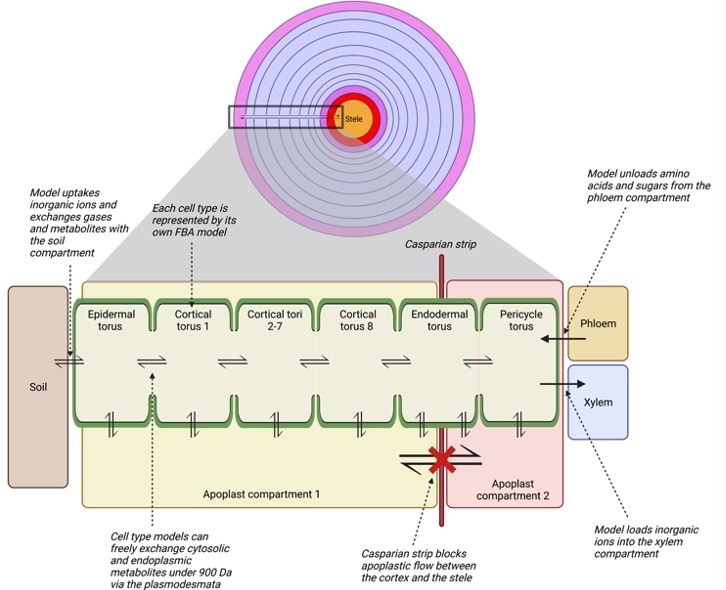
Metabolism in the elongation zone of a maize lateral root
Authors
Hunt H, S Leape, JS Sidhu, I Ajmera, JP Lynch, RG Ratcliff, LJ Sweetlove
Source
The Plant Journal Oct 13 2023 http://doi.org/10.1111/tpj.16478
Download Options
Abstract
The root is a well-studied example of cell specialisation, yet little is known about the metabolism that supports the transport functions and growth of different root cell types. To address this, we used computational modelling to study metabolism in the elongation zone of a maize lateral root. A functional-structural model captured the cell-anatomical features of the root and modelled how they changed as the root elongated. From these data, we derived constraints for a flux balance analysis model that predicted metabolic fluxes of the 11 concentric rings of cells in the root. We discovered a distinct metabolic flux pattern in the cortical cell rings, endodermis and pericycle (but absent in the epidermis) that involved a high rate of glycolysis and production of the fermentation end-products lactate and ethanol. This aerobic fermentation was confirmed experimentally by metabolite analysis. The use of fermentation in the model was not obligatory but was the most efficient way to meet the specific demands for energy, reducing power and carbon skeletons of expanding cells. Cytosolic acidification was avoided in the fermentative mode due to the substantial consumption of protons by lipid synthesis. These results expand our understanding of fermentative metabolism beyond that of hypoxic niches and suggest that fermentation could play an important role in the metabolism of aerobic tissues.

